Winter is a time of reflection and beauty here in the Midwest. The anticipation of the increasing light is in the air and today we went for a tree walk in The University of Wisconsin Arboretum in Madision, WI. The collection of trees there is amazing and what a treat to walk through in the snow and with the only other walking creatures being the resident turkeys.
Anticipation was all around, as we looked at each tree with it's bud waiting for the right time to "spring" open. As we walked through the light snow, the bark on the trees was illuminating. Each different, unique and more obvious than when the leaves are present. The trees are alive and in waiting. They are absorbing the food they stored last year and are in waiting for the light, for photosynthesis to once again begin. Standing against a tree trunk, I could feel a vibration, a low hum of readiness.
Trees have long been a source of inspiration as well as a source of food and medicine. Identifying trees during the winter months is fun and it can provide an outdoor activity. Identification in the winter begins with the bark. The bark of each tree is unique, look for unique marks on the trunk as well as the branches. For example Hawthorn will have sharp thorns, both on the trunk and the branches. Some more than others, but they will be there. Other identifying characteristics of trees in general are leaf scars, buds, old leaves, bracts and/or dried berries.
The collection of trees at the arboretum is extensive, impressive and provides an incredible education for the enthusiast, herbalist, permaculturist and/or admirer. Below are a few photographs of the trees that we visited. I can't think of a better way to spend a crisp winter day than walking with the trees.
A few of the Trees we visited on our walk:
Striped or Moose maple (Acer pensylvanicum)is a spiecies of maple thats native the northeastern part of the US from southern Ontario and down into the Appalachian mountains. In Wisconsin this tree is more common in the northern part of the state but when you see it you'll never forget it. The beauty of this tree will be etched in your mind forever. The striking coloration of the bark is what makes this tree stand out so much. It is an understory tree and does stay smaller than other maples. Sounds perfect for broom handles!!
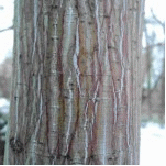
Grafted Ash Tree: (Fraxinus sp)you can tell by the sharp contrast below and above that this tree was grafted. Ash bark can make an infusion that is a mild laxative and diuretic. The root bark is the most potent with astringent properties, and was used to treat liver diseases and arthritic rheumatism. Other uses include reducing fever, treating kidney and urinary infections, expeling intestinal parasites, and treating malaria.
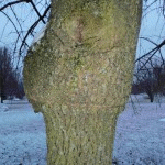
One of the easier Trees to identify is paper birch (Betula papyrifera). The sap can be made into syrup, wine, beer, and medicinal tonics.
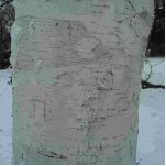
Cornelian Cherry Dogwood, (Cornus mas) this shrub has a rough shaggy bark. The bark has been used historically for medicine and in the late summer or early fall you can harvest the edible fruits.
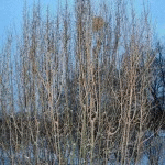
This tree is: (Phellodendron sachalinense).As you can see the bark is quite unique. The common name is Sakhalin corktree "His Majesty". Sakhalin cork trees are easily grown from seed and transplant well in a range of soil conditions. Mature Sakhalin cork trees have thick, cork-like bark around the trunk. It is one of the largest types of cork trees available
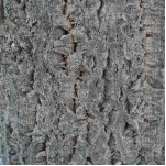
Linden (Tilia sp.)There are many species of Linden at the arboretum. One of the tell tales signs are the remnants of the bract and the berry, pictured here. The linden tree produces fragrant and nectar-producing flowers. They are very important honey plants for beekeepers. The flowers are also used for tisanes and tinctures; this kind of use is quite popular in Europe and also used in North American herbal medicine practices.
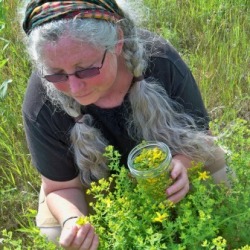
Linda Conroy is a bioregional, wise woman herbalist, educator,wildcrafter, permaculturist and an advocate for women's health.
She is the proprietress of Moonwise Herbs and the founder of Wild Eats: a movement to encourage people and communities to incorporate whole and wild food into their daily lives. She is passionate about women's health and has been working with women for over 20 years in a wide variety of settings.
Linda is a student of nonviolent communication and she has a masters degree in Social Work as well as Law and Social Policy. Linda has been offering hands on herbal programs and food education classes for well over a decade.
She has completed two herbal apprenticeship programs, one of which was with Susun Weed at the Wise Woman Center and she has a certificate in Permaculture Design.
Linda is a curious woman whose primary teachers are the plants; they never cease to instill a sense of awe and amazement.
Her poetic friend Julene Tripp Weaver, eloquently describes Linda when she writes, "She listens to the bees, takes tips from the moon, and follows her heart."
Listen to a thirty minute interview with mentor Linda Conroy
Study with Linda Conroy from Home
The goal of the course is to have participants become familiar with herbal medicine, to become comfortable incorporating herbs into daily life and to gain hands on experience making simple remedies at home.






 Linda Conroy is a bioregional, wise woman herbalist, educator,wildcrafter, permaculturist and an advocate for women's health.
Linda Conroy is a bioregional, wise woman herbalist, educator,wildcrafter, permaculturist and an advocate for women's health.
